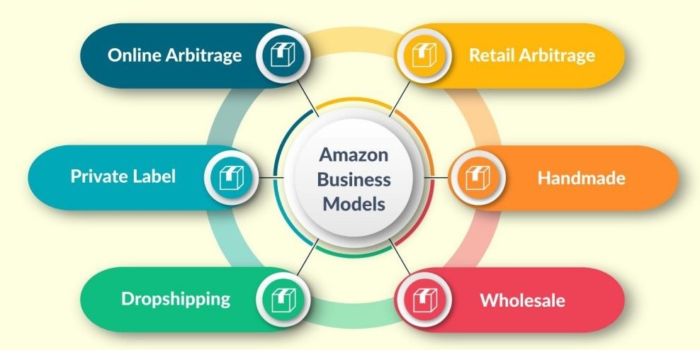The cloud computing division of Amazon, known as Amazon Web Services (AWS), is transforming the way companies handle IT infrastructure. Since its 2006 launch, Amazon Web Services has grown from being a basic storage service to the world’s biggest and most feature-rich cloud platform. Amazon Web Services offers enterprises scalable solutions in the areas of computational power, storage, databases, networking, artificial intelligence, and more. It offers more than 200 fully functional services. It has completely changed how businesses of all sizes implement, oversee, and grow their services and apps, making them more flexible, productive, and economical.
Amazon Web Services, a leader in cloud computing, has been instrumental in helping businesses transition from conventional on-premise infrastructure to adaptable, on-demand solutions. For startups, small-to-medium-sized businesses (SMBs), and corporations looking to develop without having to pay the high upfront expenses of maintaining physical infrastructure, this move has been especially important. These enterprises would not have been able to obtain such powerful computer resources at such a low rate without the assistance of AWS. The three main pillars of the Amazon Web Services business plan are pay-as-you-go pricing, customer-centricity, and ongoing innovation. Businesses may deploy services across regions with low latency and high availability because to its vast global infrastructure.
Table of Contents
AWS Overview
Amazon Web Services (AWS) has radically altered the cloud computing market with its unrivaled breadth of services and worldwide infrastructure. Amazon Web Services provides over 200 fully functional services, ranging from cloud storage, databases, machine learning, and computational power to Fortune 500 firms and startups. The capacity of Amazon Web Services to provide robust, scalable, and dependable solutions while letting companies just pay for what they use is what makes it stand out. Amazon Web Services is now the preferred platform for businesses wishing to develop and expand without incurring significant upfront expenses because of its flexibility.
With data centers spread over more than 25 regions, Amazon Web Services has one of the broadest geographic reachs of any provider, guaranteeing low latency and high availability for companies operating in any part of the world. Businesses that cater to a variety of global markets will find Amazon Web Services to be great as it allows clients to install apps closer to their end consumers. AWS offers enterprises the speed, scalability, and security needed to run mission-critical corporate apps, streaming services, and e-commerce platforms.
In addition to infrastructure, Amazon Wev Services is a major force in developing technology. With its cutting-edge services in big data, machine learning, and artificial intelligence, Amazon helps companies to use innovative technologies to improve operations and obtain insights. With its ability to predict consumer behavior and automate processes, AWS has evolved into more than simply a cloud platform.
AWS Business Model
The fundamental tenet of Amazon Web Services’ (AWS) business strategy is the provision of pay-as-you-go cloud services that are scalable, adaptable, and economical. Customers may avoid the upfront expenses and hassles of managing their own IT infrastructure with this innovative concept. Rather, businesses only have to pay for the computational power they really need, scaling it up or down as needed. Because of this strategy, AWS has been especially appealing to startups, small companies, and large corporations, providing them with the flexibility to handle changing demands without having to make significant investments in software or hardware.
Amazon Web Services offers a diverse portfolio of services, from compute and storage to networking, machine learning, and security. By continually adding new services and features, AWS keeps itself ahead of the competition and ensures that businesses can manage their entire IT ecosystem in one place. Additionally, AWS provides managed services that allow companies to focus on their core operations while AWS handles maintenance, updates, and scalability. This broad and evolving range of services not only attracts a wide array of customers but also helps businesses innovate and experiment with minimal risk.

Additionally, AWS’s business strategy is focused on dependability and worldwide reach. By locating its data centers in several global areas, AWS guarantees that companies may implement their applications near their clientele, thus decreasing latency and improving user experience. AWS’s very secure architecture also complies with industry requirements and provides enterprise-grade security for sensitive data. With its extensive worldwide infrastructure, solid business relationships, and growing clientele, Amazon is able to sustain its growth and competitive advantage in the ever changing cloud computing industry.
Market Opportunity and Target Audience
Amazon Web Services (AWS) has a huge market opportunity since cloud computing is still growing at an exponential rate. Driven by the growing usage of digital solutions, big data analytics, artificial intelligence (AI), and Internet of Things (IoT) technologies, the worldwide cloud computing industry is predicted to reach a value of over $1 trillion by 2030. By taking advantage of the increasing need for adaptable, scalable, and reasonably priced infrastructure that enables companies to innovate and run effectively, AWS has established itself as the industry leader in this field. As more businesses move their IT operations from on-premises to the cloud, AWS’s market dominance gives it a big edge in gaining market share in a variety of industries.
Target customers for Amazon Web Services include government agencies, major corporations, small-to-medium-sized companies (SMBs), and startups. One of AWS’s most significant clientele is startups, who take advantage of the platform’s low entry cost, scalability, and agility. By means of programs such as AWS Activate, startups may obtain training, technical assistance, and credits that facilitate the launch and growth of their enterprises without requiring substantial upfront expenditures in IT infrastructure. Amazon Web Services gives small and medium-sized businesses (SMBs) the necessary tools to simplify operations and free them up to concentrate on expansion and innovation.
Large corporations and government organizations have substantial prospects for Amazon Web Services, in addition to startups and SMBs. Companies in industries such as banking, healthcare, and retail are shifting to Amazon because of its enterprise-level security, dependability, and worldwide presence. Amazon Web Services has also become more popular in the public sector because to services like AWS GovCloud, which provide safe and legal solutions for government workloads. This diversified client base, along with AWS’s focus on personalizing its products to fit unique demands, has enabled the business preserve its competitive advantage and tap into the fast expanding demand for cloud-based solutions throughout the globe.
Key Revenue Streams
Compute services are the main source of income for Amazon Web Services (AWS), although the company also makes money from other important sources. Amazon Elastic Compute Cloud (EC2), which enables companies to rent virtual servers for their applications, is the foundation of AWS’s compute capabilities. Because of its pay-as-you-go strategy, scalability, and flexibility, EC2 has become a vital resource for both small and large businesses. Companies can quickly adapt their computing capacity to meet demand, which is very helpful for managing workload fluctuations. Amazon Web Services also provides a serverless computing solution called AWS Lambda, which enables companies to run code without having to manage servers and opens up new possibilities for creativity and cost savings.
Storage solutions, particularly those provided by Amazon Elastic Block Store (EBS) and Amazon S3 (Simple Storage Service), are another substantial source of income. With S3 being one of the most robust and scalable storage options available, these services let users store and access data from any location. S3 is commonly utilized for media storage, large data analytics, and data backups, whereas EBS offers permanent storage for EC2 instances. AWS’s scalable storage solutions are essential as companies continue to collect enormous volumes of data, generating a consistent flow of income. Furthermore, for companies wishing to gradually cut back on storage costs, AWS’s Glacier offering provides inexpensive, long-term storage for historical data.
AWS generates significant income from its analytics and database offerings as well. Businesses may get dependable and completely managed database systems with managed database solutions like Amazon RDS (Relational Database Service) and Amazon DynamoDB, which do away with the necessity for human database maintenance duties. Similar to this, AWS is a leader in big data solutions because to its Amazon Redshift and Kinesis services, which offer strong data warehousing and real-time data processing capabilities. These services continue to be important sources of income for AWS, solidifying its position as a key participant in the worldwide digital transformation of enterprises as more companies look to leverage data for innovation and decision-making.
Competitive Landscape
Amazon Web Services (AWS) faces intense competition from other major cloud providers as they compete for market share in the rapidly expanding cloud computing industry. The most significant rival of AWS, especially in the commercial market, is Microsoft Azure. Azure’s strong integration with Microsoft’s current software products, such Office 365 and Windows Server, has drawn the attention of major organizations that are already dependent on Microsoft’s ecosystem. Businesses that require both on-premises and cloud-based infrastructure find Azure’s hybrid cloud solutions appealing. This gives the company a competitive edge in industries like banking and healthcare where stringent data management is necessary.
Another big contender in the cloud computing industry is Google Cloud Platform (GCP), especially in the fields of machine learning, artificial intelligence, and data analytics. The key to Google Cloud’s success is its suite of robust tools, like BigQuery and TensorFlow, which draw in data-driven companies seeking AI and advanced analytics capabilities. Startups and tech-savvy businesses who need cutting-edge technology to spur innovation also prefer GCP. Despite having a lower market share than Amazon Web Services and Azure, Google Cloud nevertheless poses a significant threat to AWS in these developing areas thanks to its ongoing investments in AI and machine learning technologies.

Other than Google and Microsoft, Alibaba Cloud and IBM Cloud are significant rivals, especially in certain industries and geographical areas. Alibaba Cloud is a market leader in Asia, particularly in China, and it is fast growing globally. It is a desirable alternative for companies wishing to access the Asian market because of its more affordable solutions and strong localized emphasis.
In the meanwhile, IBM Cloud leverages its long-standing connections with major businesses in sectors like banking, healthcare, and government to place a strong emphasis on hybrid cloud and industry-specific solutions. Even while AWS continues to dominate the worldwide cloud services market, these providers’ competitiveness means that Amazon Web Service must keep up its innovation and growth to stay ahead of the curve in a market that is changing quickly.
Marketing and Sales Strategy
Amazon Web Services (AWS) uses a multipronged marketing and sales approach aimed at a variety of markets and companies, from start-ups to large multinational corporations. One of its primary marketing techniques is having a strong presence at industry conferences and events such as AWS re , where the firm presents its latest services and solutions to a worldwide audience. These gatherings showcase AWS’s technology innovations while also offering practical instruction, chances for networking, and case studies of effective AWS deployments. By interacting directly with developers, IT specialists, and decision-makers, AWS enhances its reputation and establishes itself as a thought leader in cloud innovation.
Amazon Web Services places a strong emphasis on content marketing and educational materials. Through resources like AWS Training and Certification, AWS offers comprehensive documentation, webinars, online courses, and certifications. By providing these tools, AWS fosters customer loyalty and boosts adoption rates by giving developers and organizations the know-how to make the most of its services. Another crucial element of its marketing approach is the AWS Partner Network (APN), which enables AWS to interact with independent software vendors (ISVs) and consultancy partners to offer specialized services to a larger market. This network of partners enables AWS to expand its clientele and customize its offerings to fit the demands of particular sectors.
In order to contact potential clients, Amazon Web Services employs a focused approach in its sales strategy, combining digital marketing with direct sales staff. AWS works with specialist account managers and solution architects for enterprise clients, who collaborate closely with businesses to comprehend their specific needs and offer tailored cloud solutions. Amazon Web Services uses digital marketing campaigns and its AWS Activate program, which provides credits, tools, and assistance to encourage cloud adoption for smaller enterprises and startups. With a competitive price structure and a client-centric strategy, AWS can increase its customer base across various market sectors and meet a wide range of business demands.
Conclusion
In conclusion, because of its wide range of services, adaptable infrastructure, and customer-focused business strategy, Amazon Web Services (AWS) has solidified its position as the market leader in cloud computing. AWS continues to revolutionize how businesses function by delivering cutting-edge solutions that suit all sizes. These solutions provide businesses the flexibility, cost-effectiveness, and technical advantage they need to remain competitive in a quickly changing digital world. AWS is at the vanguard of cloud innovation because to its pay-as-you-go pricing model, worldwide infrastructure, and cutting-edge services in big data, machine learning, and artificial intelligence.
The secret to AWS’s success is its ability to change with the times and meet the needs of the market while fostering close bonds with a wide range of clients, including government organizations, startups, and small and medium-sized companies. Amazon Web Services is still in a strong position to grow its market share in the future because to ongoing investments in cutting-edge products and a strong sales and marketing plan. Businesses will depend more and more on digital transformation as cloud adoption picks up speed, and Amazon Web Servcies will play a major role in transforming sectors and helping companies prosper in the digital future.
Discover more from Sporty Vaibhav
Subscribe to get the latest posts sent to your email.



Pingback: Lakers vs Suns :- Showdown in the Desert🏀2024